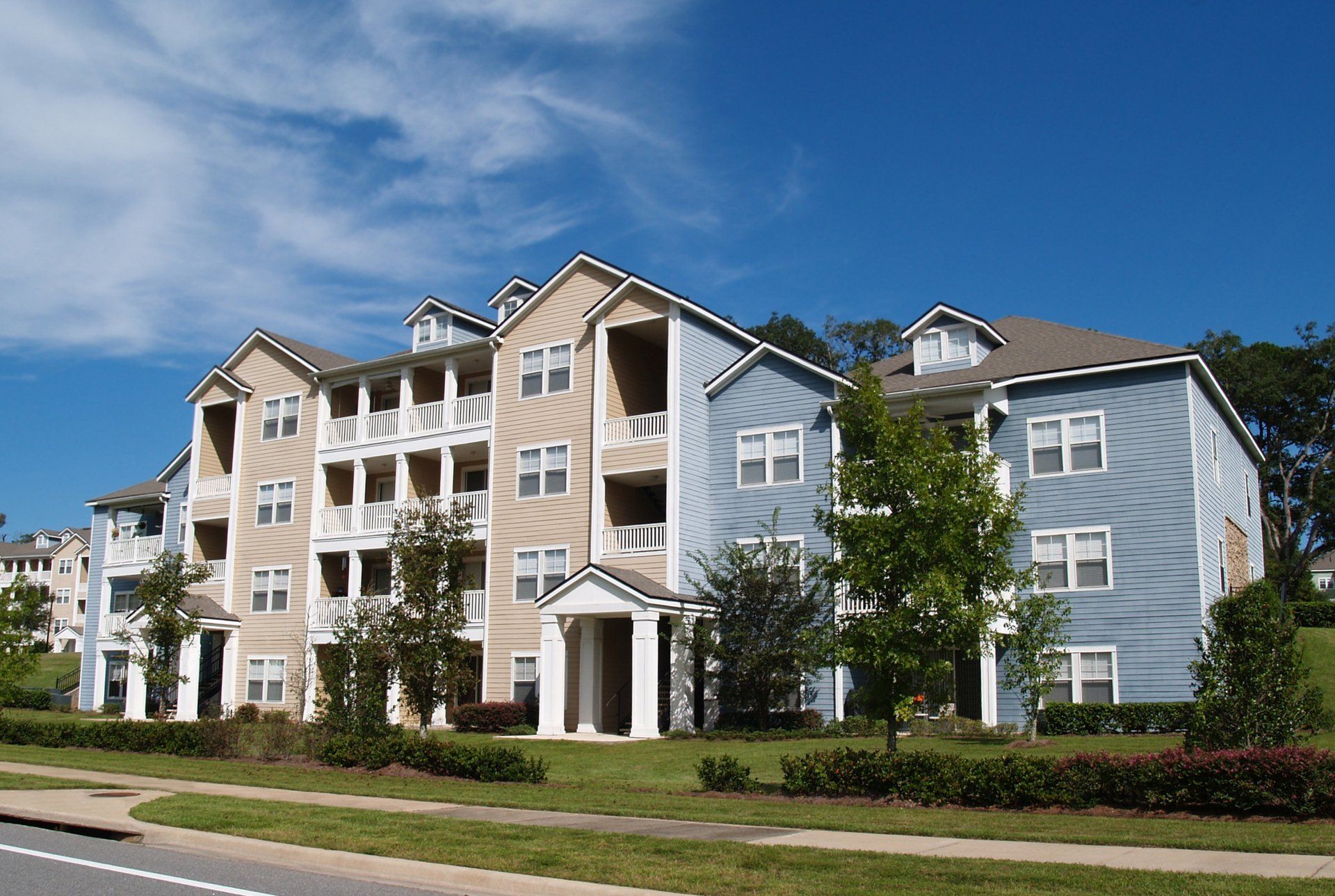How the CARES Act could benefit Investors
The $2 trillion Coronavirus Aid, Relief, and Economic Security (CARES) Act was signed into law by President Trump on March 27th, 2020. The economic stimulus package is designed to bolster the U.S. economy with fiscal stimulus, grants and loans equal to nearly 10% of the country’s economy.1
There are also a number of potential benefits for the real estate industry in the CARES Act, including direct cash payments and tax advantages for real estate investors, landlords, and tenants.
In this article we’ll take a look at tax advantages included in the CARES Act that could benefit accredited real estate investors.
How the CARES Act could benefit commercial real estate investing
- Under the existing tax code real estate investors generate losses from depreciation by gradually writing down the value of their properties, then using some of those losses to offset other taxes.2
- The TCJA (Tax Cuts and Jobs Act) passed in December 2017 limited those losses. For example, a married couple could only shelter the first $500,000 of non-business income, such as capital gains from investments, and were required to carryforward any additional losses to future years.3
- The CARES Act removes the restriction the TCJA created for three years – retroactive to 2018 and 2019, and the current 2020 tax year – which may benefit couples with more than $500,000 in annual capital gains or income from sources other than their business.4
Potential tax benefits for real estate investors in the CARES Act
Here are the highlights from the CARES Act that could offer tax benefits to real estate investors:5
5-year carryback allowed for NOLs
Net operating losses (NOLs) accrued in 2018, 2019, and 2020 may be carried back for five years preceding the NOL. Prior to the CARES Act, NOL deductions could not be carried back to prior years and were limited to 80% of a business’s taxable income. However, REITs are not allowed to carry back NOLs.
Suspension of NOL deduction limitation
The NOL deduction limit of 80% of taxable income is also suspended during 2020. This allows businesses to use NOLs to offset 100% of their taxable income in 2020. The 80% limit will be reinstated beginning in 2021.
Corrects QIP depreciation
Qualified Improvement Property (QIP) – also known as leasehold improvements – are now eligible for immediate depreciation, a provision that may be of significant benefit to hotels, restaurants, and retail establishments. The change applies to the current 2020 tax year and is retroactive to 2018 and 2019. Taxpayers must file amended returns the prior years to recover any overpaid taxes.
While touted as a benefit for the 1% by publications such as The New York Times6, the CARES Act actually corrects an error made in the Tax Cuts and Jobs Act (TCJA) passed on December 22, 2017 that mistakenly made the QIP depreciable over 39 years instead of 15.
Loss limitations for non-corporate taxpayers removed
The TCJA placed a limit on the amount of tax deductions arising from business losses that non-corporate taxpayers could make. The CARES Act removes those limitations for 2018 through 2020. Taxpayers who were subject to these limitations may file amended returns for 2018 and 2019 to benefit from this change.
Business interest expense deduction increased
The maximum amount of tax-deductible business interest expenses is increased from 30% to 50% of adjustable taxable income (ATI) for 2019 and 2020. Taxpayers are not required to use this change. Instead, they may elect to use their 2019 ATI to determine their maximum business interest deduction for 2020, rather than their ATI in 2020.
AMT credits may be used immediately
Corporations with unclaimed AMT credits may now claim them immediately. Previously, the TCJA allowed corporations with previous AMT liability to claim credits but required the credits to be spaced out over several years.
Readers interested in reviewing the entire 880-page CARES Act may download the PDF from the Tax Foundation here.
Other parts of the CARES Act affecting investors and tenants
According to The National Law Review, other parts of the CARES Act that could benefit commercial real estate investors include:7
Multifamily mortgage loan payment forbearance: Borrowers under a federally backed multifamily mortgage loan may be able to temporarily forbear payments for three 30-day extensions, provided by are current on payments as of February 1, 2020. During the forbearance period the borrower may not evict a tenant for nonpayment of rent or charge late fees or other penalties for late payment of rent.
Eviction moratorium on federally backed properties: For 120 days following the enactment of the CARES Act, an owner cannot initiate actions for evictions, or any act related to the tenant’s nonpayment of rent or fees. The rule applies to mortgages insured, guaranteed, supplemented, protected, or assisted in any way by federal loan programs from organizations including HUD, Fannie Mae, and Freddie Mac.
Small business paycheck protection program: Qualifying small businesses – including full or part-time sole proprietors, independent contractors, self-employed individuals, and gig economy workers – may apply for a forgivable loan program to help support their payroll and operations during the COVID-19 pandemic.
$2 trillion and looking for more
A recent article on The Real Deal reports that while the CARES Act could help to ease the economic pain for renters – and therefore landlords and lenders – the $2 trillion Act may not be enough.8
The CEO of the California Apartment Association (CAA) notes that the current relief package contained in the CARES Act does little for landlords who do not have federally backed mortgages or subsidized renters. That may be one reason why plans are already being put together for another stimulus package for April.
According to The Wall Street Journal, think tanks and lobbyists, economists, administration officials, and legislators from both sides of the aisle are currently roughing out another emergency spending package that may be larger than the $2 trillion CARES Act.9
Conclusion
The New York Times also notes that the CARES Act could be a “potential bonanza” for America’s richest real estate investors.10
In part, that’s because the Act could provide $170 billion in tax breaks if real estate investors make use of the renewed provisions to use real estate losses and depreciation to reduce the amount of federal income tax owed.
References
2. https://www.irs.gov/publications/p946
3. https://www.congress.gov/bill/115th-congress/house-bill/1/text
4. https://files.taxfoundation.org/20200325223111/FINAL-FINAL-CARES-ACT.pdf
All information provided herein is for informational purposes only and should not be relied upon to make an investment decision and does not intend to make an offer or solicitation for the sale or purchase of any specific securities, investments, or investment strategies. Nothing contained herein constitutes investment, legal, tax or other advice nor is it to be relied on in making an investment or other decision. Readers are recommended to consult with a financial adviser, attorney, accountant, and any other professional that can help you understand and assess the risks associated with any investment opportunity.

GET IN TOUCH
Contact Us.
Fill out the form below and our team will be in touch shortly.
Contact Us
We will get back to you as soon as possible.
Please try again later.
*The information provided is for convenience only. It is not investment advice or a recommendation, it does not constitute a solicitation to buy or sell securities, and it may not be relied upon in considering an investment in a Lannister fund. Past performance is no guarantee of future results. Any historical returns expected returns or probability projections may not reflect actual future performance. All securities involve risk and may result in partial or total loss. Investment in Lannister funds is available only to independently verified “accredited investors” through an offering made in accordance with Rule 506(c) under Regulation D of the Securities Act of 1933. Before investing in any Lannister fund, prospective investors should consider carefully the investment objective(s), risks, arches, and expenses. While the data we use from third parties is believed to be reliable, we cannot ensure the accuracy or completeness of the data provided. Lannister Capital does not provide legal or tax advice. Prospective investors should consult with a tax or legal adviser before making any investment decision.
**Targeted IRR and Equity Multiple listed above represents the property’s internal rate of return (IRR) or Equity Multiple based on the property’s forecasted cash flows generated over a period of time and the amount invested in the property. This is different from the forecasted IRR or Equity Multiple to the investor in the applicable fund or other investment vehicle.
***We temporarily ceased distributions for 3 months in response to COVID-19 as a business decision to protect the Fund and also in accordance with the Operating Agreement. We have since started making distributions again. There could be reasons in the future that we similarly make the decision to cease distributions if it is in the best interest of the Fund.
The website may contain forward-looking statements. You should not rely upon forward-looking statements as predictions of future events. These statements involve known and unknown risks, uncertainties, and other factors that may cause an investment’s actual results to be materially and adversely different from those expressed or implied by these forward-looking statements. Past performance is no guarantee of future results. Any historical returns, expected returns, or probability projections may not reflect actual future performance. All securities involve risk and may result in partial or total loss. Before making an investment decision with respect to any offering, potential investors are advised to carefully read the related subscription and offering memorandum documents and to consult with their tax, legal and financial advisors. Lannister Capital does not give investment advice or recommendations regarding any offering posted on the website.

